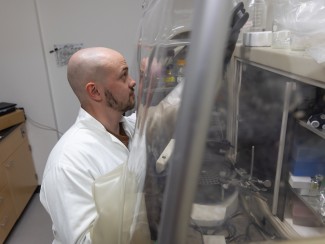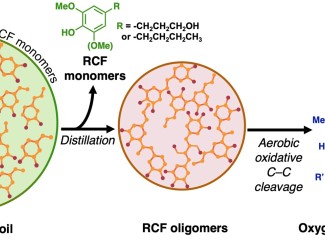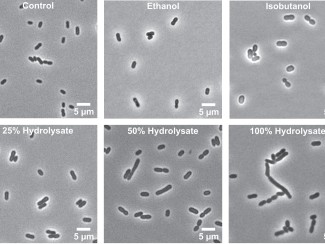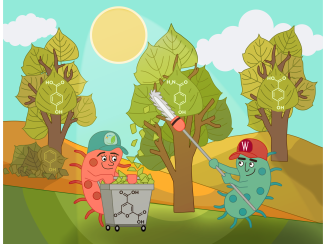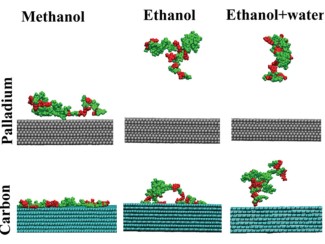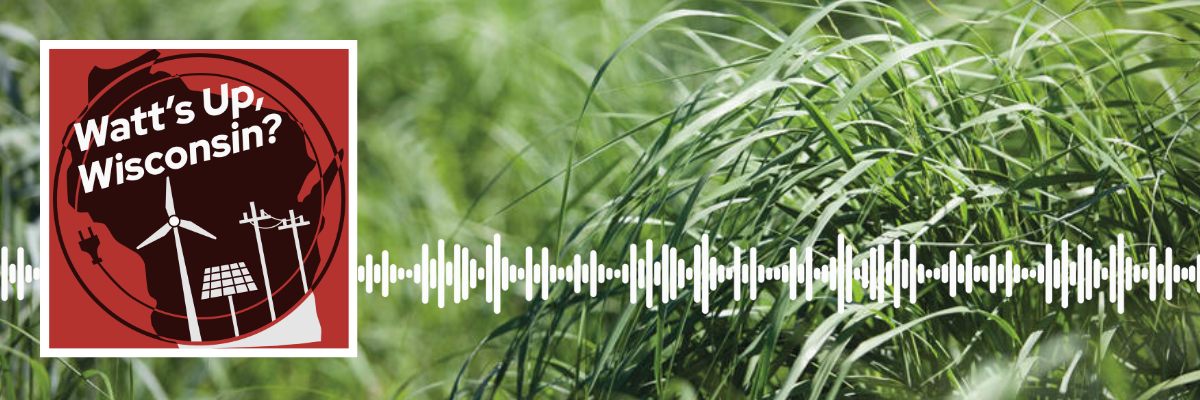
Bioenergy utilizes energy from plants to create fuels. But, how exactly do plants get so much energy? In part one of a three part series, Bioenergy Basics, we focus on how plants store energy, what crops are best for bioenergy, and how researchers are working to make these plants better. Bioenergy researcher Cullen Vens takes us on a photon's journey, following the energy from the sun to a plant.
Do you have a question about energy in Wisconsin? Ask the Wisconsin Energy Institute at communications@energy.wisc.edu or tweet us and tag #WattsUpWI.
Listen to Watt's Up, Wisconsin? on Apple podcasts, Spotify podcasts, Google Podcasts, Youtube, or anywhere you find podcasts.
Guests
 Cullen Vens, Postdoctoral Researcher in Rebecca Smith's Lab at the Great Lakes Bioenergy Research Center
Cullen Vens, Postdoctoral Researcher in Rebecca Smith's Lab at the Great Lakes Bioenergy Research Center
Cullen is working on ways to make bioenergy sorghum more easy to break down. In addition to research, Cullen is a Scientific Teaching Fellow at WISCIENCE, UW-Madison's science outreach program, and is passionate about facilitating learning via mentorship and teaching.
Credits
 Britta Wellenstein, Host
Britta Wellenstein, Host
Britta is a Wisconsin Energy Institute communications intern and UW–Madison undergraduate majoring in Life Sciences Communication and Environmental Studies.
This episode was produced by Britta Wellenstein and Michelle Chung.
Theme music by Eden Comer.
Transcript
Britta Wellenstein: When you think of energy and fuel, what comes to mind? Maybe you think of big power plants, lightning and fire, or solar panels. But either way, it's often physical, mechanical things that come to mind. But what if, when you thought of energy, you thought of prairie land or a wooded area?
[wind and bird chirps]
Britta Wellenstein: What if a crop became the fuel you put into your car?
Although it may not seem like it, plants hold an enormous amount of energy, but it gets it just from the sun, water and air. Today on Watt’s Up, Wisconsin, we'll look at how researchers here in Madison, Wisconsin, are creating bioenergy from plants. This is part one of a new series on bioenergy following how we get from plant to fuel.
In this first episode, we'll look into the plants themselves and what makes a good bioenergy crop.
[Light switches on]
Britta Wellenstein: You're listening to Watt’s Up, Wisconsin. Brought to you by the Wisconsin Energy Institute, where we explore your questions on energy in Wisconsin. I'm communications intern, Britta Wellenstein.
[cow moo]
Britta Wellenstein: The general process for creating bioenergy in biofuels involves three steps planting bioenergy crops, converting the plants to fuel and integrating that fuel into the economy. Today, we're focused on bioenergy crops. To understand more about this,
I turn to bioenergy researcher Cullen Vens, a postdoctoral researcher at the Wisconsin Energy Institute and the Great Lake Bioenergy Research Center at University of Wisconsin–Madison.
Cullen Vens: Bioenergy is the energy that comes from living things. That's a very simplistic view of it, but it really becomes meaningful when you contrast it with other energy sources that we have. There's renewable energy that comes from sources that aren't alive. They are just natural physical forces acting like wind and solar, things like that. And then there are fossil sources of energy which were once alive for sure, but now are not the bio–you wouldn't be able to call them bioenergy because they're not living sources of energy.
Britta Wellenstein: So are biofuels more sustainable than something like just plain diesel that we're getting from fossil fuels?
Cullen Vens: Yeah, I mean, the fossil fuels are -what's there in the ground is what's always going to be there. They're not coming back any time soon. There will be more fossils produced long term, but not in timeframe that we could benefit from. So the renewable fuels that we're producing, the biofuels that we're producing, we can generate them year after year and hopefully in quantities that are large enough that it will be useful for humans.
Britta Wellenstein: So bioenergy uses the energy or carbon stored in plants to create energy and fuels like biodiesel. But how does a plant get this energy? Plants only need sunlight, water and air to grow. How can something that survives on just this store enough carbon to create fuels? Well, to figure this out, Cullen and I traced the energy from plants back to its ultimate source: the Sun.
[esoteric space noises]
Britta Wellenstein: The sun is a ball of energy, teasing and fuming with heat. The source of this energy is the sun's core. Some 86,000 miles from the sun's surface and some 27 million degrees Fahrenheit. There, hydrogen is fuzed together to form helium, releasing energy in the form of a photon.
Cullen Vens: So when the sun emits a photon because some chemical processes happened, fusion between molecules, there's always going to be energy that's released. And in the case of the sun, that energy a lot of the gets released as a photon and it's really amazing because that that one photon released by that process, it will end up bouncing around for possibly between tens of thousands and up to tens of millions of years just bouncing around inside the corona of the sun, hitting other photons, hitting other molecules that are broiling in the mass of the sun.
And eventually, at some point, it'll have enough velocity and it'll avoid all of the other things that are happening in the sun long enough to finally make it out of there.
Britta Wellenstein: After all those years of bouncing around in the sun's core, it only takes 8 minutes for that photon to travel 93 million miles to reach the earth. But before that photon has a chance to get to a plant. It has to steer clear of satellites or space debris as it gets closer to earth. Then, depending on what type of photon it is, it may be reflected by the clouds or the atmosphere and never even get to the earth's surface.
Only 47% of the sunlight the Earth receives actually reaches the surface. But for the photons that do.
[sparkly sound]
Well, actually the majority of the Earth's surface is the ocean. So it might not even get to a plant.
Cullen Vens: The ocean wouldn't be the worst necessarily, because there are living things there.
Britta Wellenstein: Yeah, but then.
Cullen Vens: But yeah, if you think about it, most of the photons that are ejected from the sun just end up going off into space forever and ever. Basically, it may never hit anything.
Britta Wellenstein: But even if 71% of the Earth's surface is water, some photons still find their way to a plant.
Cullen Vens: And if we're lucky enough, it will travel the the vast distance between the sun and the earth. And it'll happen to be one of the packet of photons that happens to hit a spot where a plant is growing and that plant will absorb that photon. It'll use it to propel some processes that are going on inside of the plant.
And you can follow the energy that is left behind by that photon and follow the electrons that are left inside the plants and watch the processes that they become a part of. And you can follow from the moment the photon was absorbed. You can follow the electrons that are moving and you can follow them all the way until they're used to break their water and produce the sugar and store that sugar.
Britta Wellenstein: So the energy that was formed way back in the sun's core was used by plant cells to start photosynthesis, taking in carbon dioxide and water to form sugars, which plants use as energy to grow right.
Cullen Vens: Right away. the energy that comes in with the photon is taken in by the chloroplast machinery. So the photo systems are going to use the energy in the photon in order to drive all of the biochemical processes that are going on inside the cell. And each cell is going to take in and a huge number of photons over the lifetime of that cell in then most of that energy is going to be used to either grow the cell, produce different materials that are going to help the cell live, and then a lot of it will be stored and saved up for later.
So that storage happens usually in the form of carbon, and that gets packaged as sugars and other molecules like that gets put in the cell walls, gets put in, for instance, starches in, you can think of like a potato, for instance, it's getting lots of starches are holding onto a lot of carbon. And then also throughout the stem and the leaves, all of those places, there are areas where carbon is stored in different forms.
Britta Wellenstein: Yeah. And when one of those packages is the sugar like you're talking about that we're trying to access. Yeah. For bioenergy.
Cullen Vens: Yeah, exactly.
Britta Wellenstein: Yeah. Kind of. Kind of crazy how a photon ends up like that.
Cullen Vens: It really starts it all off. The photon is, it's the energy that's used to split a water molecule, and then that water molecule, the hydrogen and oxygen, go and drive all of these other processes that lead us to take carbon dioxide, break that up, repackage it. The energy that drives all of that does come from the photon. We're pretty lucky to have a consistent source of energy and we should put it to good use.
Britta Wellenstein: Once these crops grow and store carbon in their cells, they can be harvested by us. For bioenergy, these crops, known as bioenergy crops are grown on lands, not used for agriculture and food. However, not every crop is good for bioenergy. There are specific crops that work better than others.
Britta Wellenstein: In order to kind of make bioenergy, you only need a crop, but there are specific crops that work better for bioenergy, and that's what we call like a bioenergy crop. And that's more of what your research is into. So what makes a good bioenergy crop?
Cullen Vens: Yeah, there are a lot of things for us specifically we're interested in bioenergy crops or crops in general that produce a lot of biomass. So that's the total usable plant material that we can take and convert into biofuels. So for instance, I work in sorghum.
Britta Wellenstein: Sorghum is a tall and stocky crop that kind of looks like corn. But instead of corn husks, the top of the crop has this cluster of buds.
Cullen Vens: Grain sorghum and sweet sorghum and those sorts of things are varieties that are currently grown. One that we're hoping that people adopt as a source of biofuel material is bioenergy sorghum, which is something that's been grown in order to be enormous. The plant puts most of its energy into growing a huge stem and growing super, super tall. But the stem thickness is uniform and similar to other varieties of sorghum, and you just get a lot more of it because of its height and it doesn't spend a lot of its energy making fruits, which is what the other types of sorghum are typically used for, is producing fruits that contain sugars, and then those sugars are made turned into syrups and molasses and things that we eat. The bioenergy sorghum is definitely dedicated to being a source of biomass that we can then convert into fuels.
Britta Wellenstein: Sorghum is an annual crop, meaning it has to be replanted every year. But other bioenergy crops, like switchgrass and poplar trees, are perennial plants, meaning that even after the crop is harvested, their root system still exists in the soil and the plant will grow back year after year without needing to be replanted.
Cullen Vens: The benefit of using something like a like switchgrass is that you not only get the above ground growth that you can harvest and extract the carbon from, but you also have the root system that stays year after year and it acts as a carbon sink or carbon storage area. So the difficulty in using an annual grass like sorghum or corn as a source of biofuel material is that most of the time it's not going to devote much energy into producing long living roots because it's an annual it's cut down.
It'll, you know, the next generation comes from the seed, all of the carbon that from an environmental benefit standpoint, all the carbon that's locked up in that plant is going to be extracted again by us and used for energy. In the end, it ends up being kind of a net zero situation where it's captured this much carbon and then that much carbon is released.
So it's not really harmful in the way that releasing the carbon that's stored in fossil fuels is. But it's not a net benefit like you would get from using something like switchgrass or another perennial grass or perennial plant where you still have the carbon storage in the roots year after year, and they can grow and grow and grow and get bigger and bigger, so your carbon capture is greater. Yeah. And then no matter what you harvest, you're still going to be storing way more carbon in the roots.
Britta Wellenstein: However, even though crops like switchgrass have more carbon storage, they don't have as much biomass as sorghum.
Cullen Vens: In the long run, one switchgrass plant will eventually produce more biomass than one sorghum plant. Let's say we're just growing side by side, one switchgrass plant and one sorghum plant. Right? So you cut down the switchgrass. It's a lot less biomass that one year. But if you add up year after year, the production, it'll be greater. But I mean, farmers or just growers in general, they are making that decision every year, what plant to grow. And if you can start with the seed every year and in the same space like you grow one sorghum plant, it grows up, you cut it down, you put a new seed, grow up, a new sorghum plant it, cut it down, You are using the same amount of space and resources, but you're getting way more biomass out of it, and then, even though you're not getting the benefit of the storage.
[music]
Britta Wellenstein: Okay, let's recap. Plants utilize the sun's energy to kickstart photosynthesis. So that's taking carbon dioxide from the atmosphere and water and using the sunlight to turn that into sugars in the plant cells. These crops are then harvested and sent off to be converted into fuels. However, harvesting the energy from plants in the conversion process can be difficult, which is why Cullen researches ways to make that energy easier to access in the first place by figuring out ways to grow plants that are easier to break down.
Cullen Vens: Trying to get a sorghum variety that's perfect for biofuel production. One of the difficulties is how hard it is to break through the cell wall, specifically the secondary cell walls of what are known as lignifying cells. And that's maybe an unfamiliar term. But lignin is the woodiness that we see in most larger plants. Trees. Yeah, the wood in trees is mostly lignin, and even when you look at corn, the really hard parts of the stem that's, that's lignin and lignin doesn't like to be broken down and it requires high temperatures. It requires either strong acid or strong base treatments in order to break that down and you have to get the lignin out of the way so that once you're inside the cell wall, you can actually get at the sugars that are being held in the cell walls.
So what we're doing is making plants spend less energy on putting certain lignin in the cell walls and making it so that the lignin that do form in the cell walls are easier to break down that we use. So in the end we'll have a plant that requires way less energy inputs and less harsh chemicals in order to break down those cell walls and get it the sugars that are in there.
Britta Wellenstein: But how do we break down that wall and how do we convert these sugars into fuel? Find out in the next episode of Watt’s Up, Wisconsin.
[music]
Britta Wellenstein: Thanks for listening in. Do you have questions about energy? Wondering how new energy solutions are taking off in Wisconsin? Let us know by sending an email at communications@energy.wisc.edu or tweet @UWenergy and tag #Watt’sUpWI.

